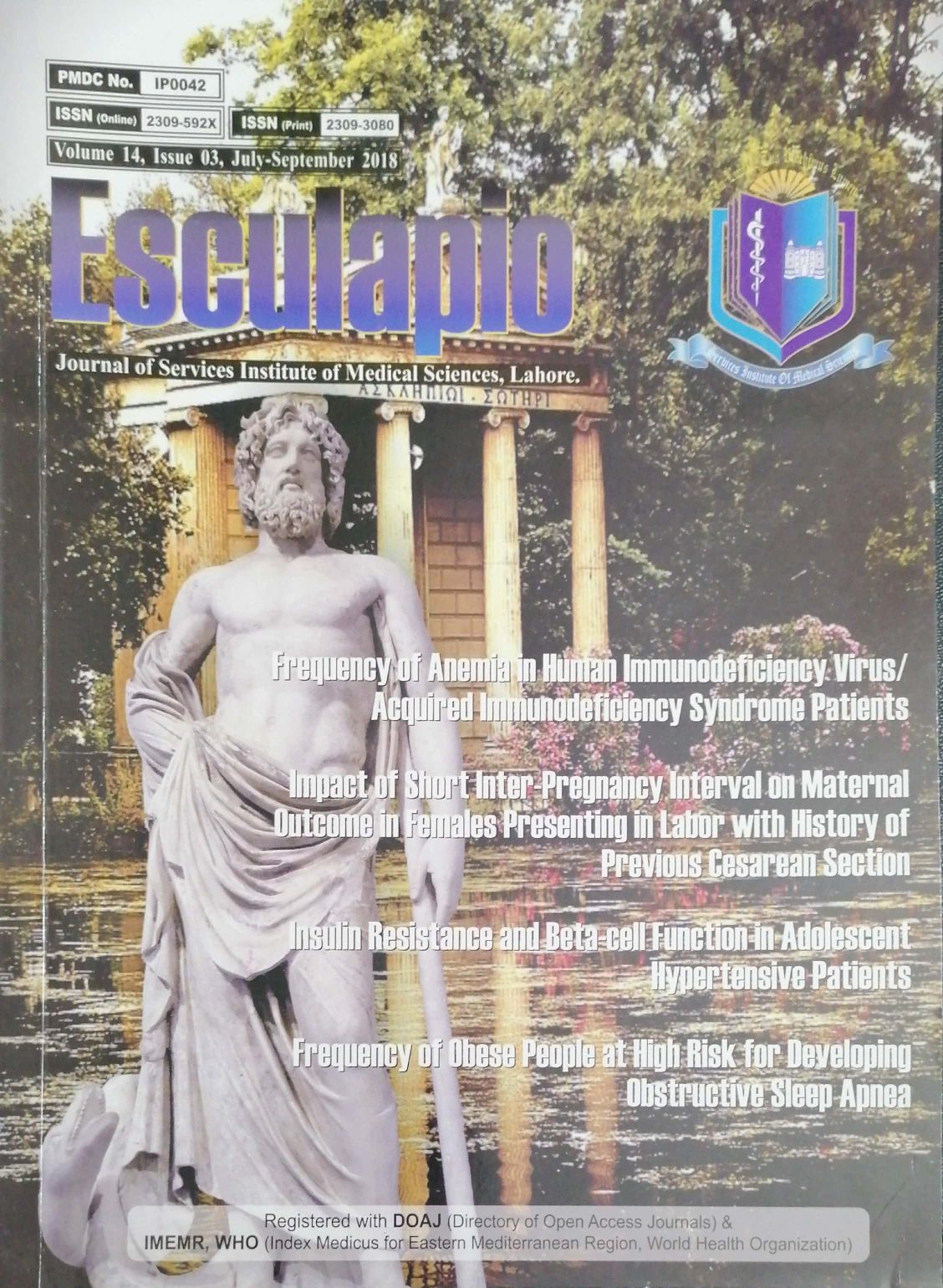Frequency of Anemia in Human Immunodeficiency Virus/Acquired Immunodeficiency Syndrome patients
DOI:
https://doi.org/10.51273/esc18.71431Keywords:
Anemia, HIV, AIDS, ELISAAbstract
Objective:To determine the frequency of anemia in HIV/AIDS patients.
Methods: This descriptive cross-sectional survey was conducted at Special/HIV clinic of
Medical Unit IV, Services Hospital Lahore over six months from 16-10-2017 to 16-04-2018, using
non-probability consecutive sampling. A total of 180 patients fulfilling the inclusion criteria were
enrolled. Informed consent was obtained; demographic data and disease characteristics were
recorded. Blood sample of each HIV positive (Confirmed by ELISA) patient (containing 3 ml
venous blood) was sent to same laboratory for complete blood count. Anemia was defined as
hemoglobin level of less than 13g/dl in males and less than 12g/dl in females. SPSS version 23.0
for windows was used to analyse data and to calculate frequency of anemia.
Results: Among the 180 patients, 136(75.6%) were males and mean age was 40.58±12.93
years. A total of 68(37.8%) patients had been diagnosed with HIV for >4 years, while 53(29.4%)
and 59(32.8%) had been diagnosed with HIV for <2 and 2-4 years respectively. The most frequent
stage was III 48(26.7%), while 40(22.2%), 47(26.1%) and 45(25.0%) was the frequency of StageI, Stage-II and Stage-IV respectively
Conclusions:Almost two thirds of all patients with HIV/AIDS were anemic which was
approximately every fifth patient. Therefore, special physician attention and timely management
can prevent morbidity and mortality associated with it.










